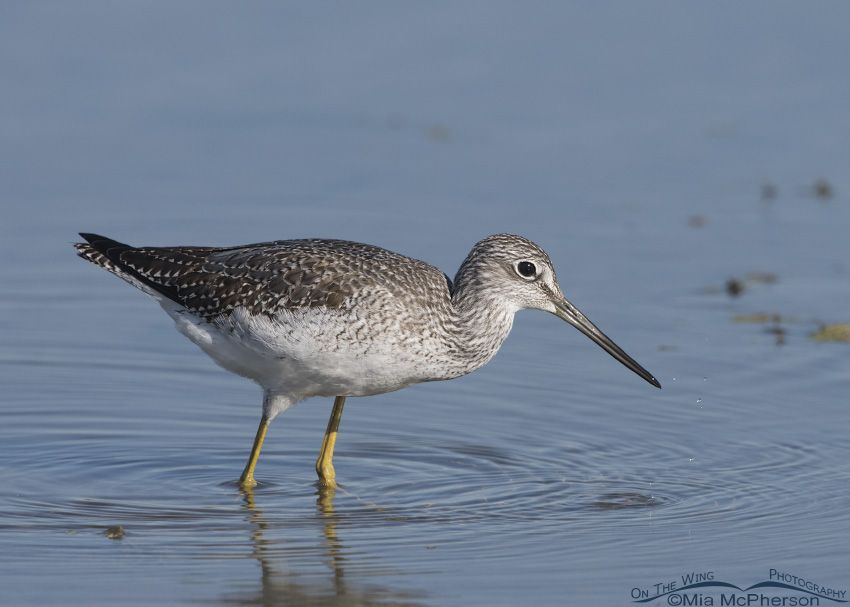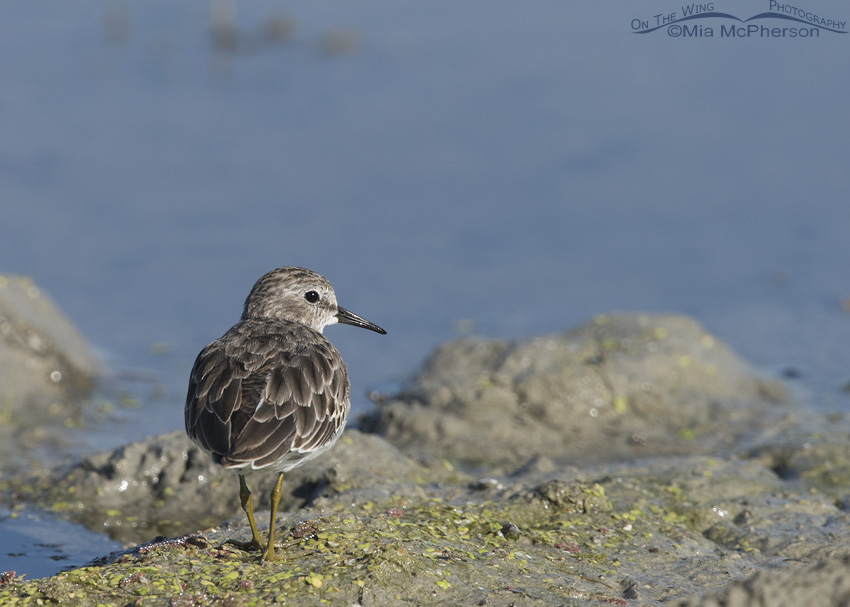 Foraging Greater Yellowlegs – Nikon D810, f7.1, 1/1600, ISO 320, -0.3 EV, Nikkor 500mm VR with 1.4x TC, natural light
Foraging Greater Yellowlegs – Nikon D810, f7.1, 1/1600, ISO 320, -0.3 EV, Nikkor 500mm VR with 1.4x TC, natural light
Shorebirds begin their fall migration early and for those of us who live in the Great Salt Lake ecosystem that means looking for them in the marshes around the lake and on the lake itself. Right now thousands of Wilson’s Phalaropes, Black-necked Stilts, Willets, Avocets and Long-billed Curlews are feeding on the brine shrimp and brine flies to fatten up for their migration to the south.
Shorebirds that breed further north are also beginning to fly in. A few days ago a friend sent me a photo to identify of a Lesser Yellowlegs she photographed recently and that made me realize that I need to start focusing on finding the migrant shorebirds.
Last fall I had several good days photographing shorebirds at a flooded area at Farmington Bay WMA and I wonder if that location will be good again this year. That is where I photographed this Greater Yellowlegs as it foraged in the shallow waters near several other yellowlegs and Pectoral Sandpipers.
 Least Sandpiper with Duckweed – Nikon D810, f7.1, 1/1000, ISO 320, Nikkor 500mm VR with 1.4x TC, natural light
Least Sandpiper with Duckweed – Nikon D810, f7.1, 1/1000, ISO 320, Nikkor 500mm VR with 1.4x TC, natural light
There were also quite a few Least Sandpipers in the area, they are North America’s smallest sandpiper. There were Wilson’s Snipe hanging around too.
Shorebird migration time, whether it is spring or fall, is a good time to keep an eye out for rarities, if I hadn’t been doing that I might have missed spotting Mountain Plovers on Antelope Island a few years ago in the spring and an Upland Sandpiper last fall on the Road to Golden Spike National Monument. I’m hoping to find a Buff-breasted Sandpiper because that would be a lifer for me. Who knows what might show up.
Fall shorebird migration can be a very exciting time and I am ready for the excitement of it all and I say bring it on!
Life is good.
Mia
Click here to see more of my shorebird photos in their galleries.


What a privilege to see.
I can’t believe we’re so close to fall…that summer’s almost over…I am definitely NOT ready to even think about winter. Both birds are beautiful, but that little sandpiper sure is cute!
Thanks for the information and the beautiful images. The cooler weather and some rain have been welcome.
Beautiful as always. I hope we have birds at Farmington. On my recent trips there have not been as many as past years.
Just splendid! I love the feather detail! Just WOW!